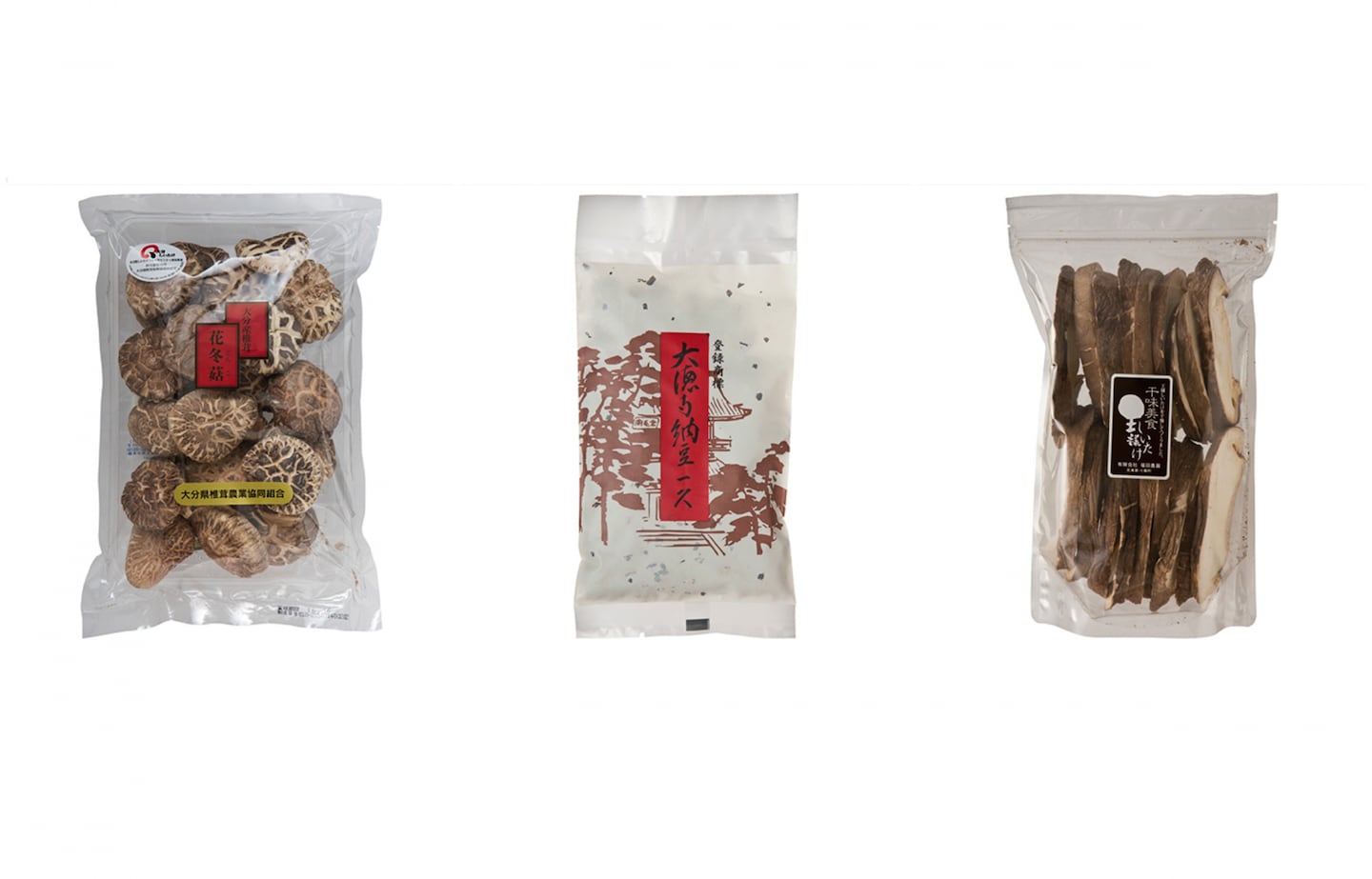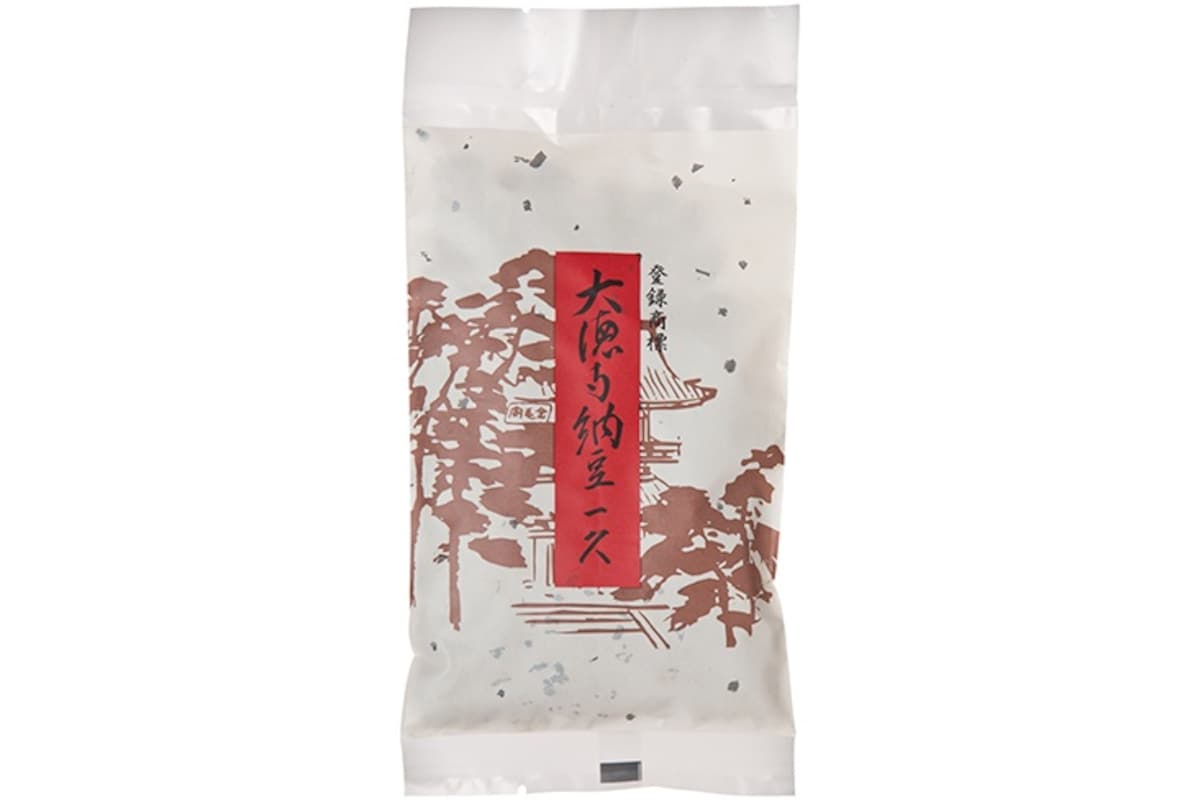4 Premium Packaged Plants
In our selection, we feature burdock, shiitake mushrooms and soy beans all wrapped, packed and ready to last. With the exception of the characteristically sticky fermented soy beans, or natto, all are dried and ready to go anywhere you want to go. Strap on your feedbag and take a look at our list!
By AAJ Editorial Team4. Hana Donko Shiitake Mushrooms (Oita)
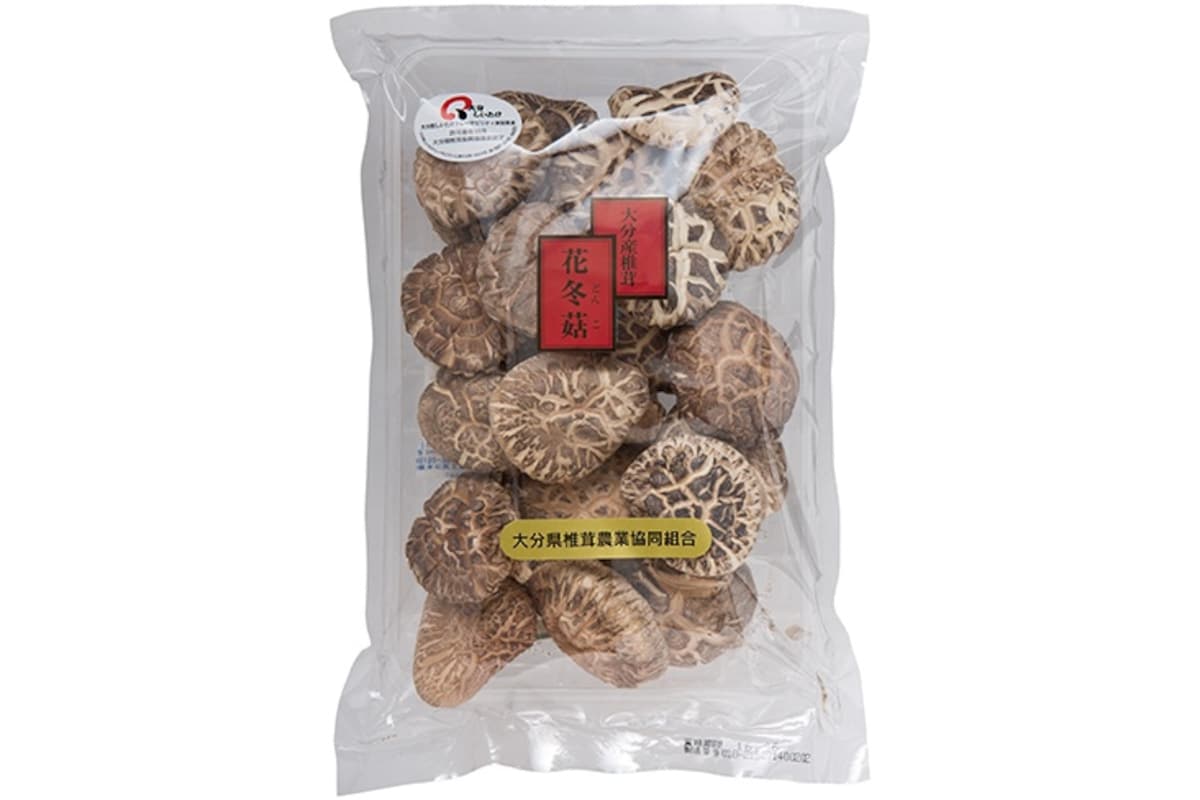
https://thewonder500.com/product/oita-kensan-hanadonko-shiitake-hana-donko-shiitake-mushrooms-from-oita-prefecture/?lang=en
Shiitake mushroom cultivation in Oita Prefecture has a long history that dates back to around the 17th century in the early Edo Period (1603-1868). Today, bed-log cultivation is flourishing. In this process, shiitake fungi is embedded in wood, such as oak, and the mushrooms are grown in places abundant with nature, including forests called hodaba. The bed-log cultivation deals with the harshness of nature and is a difficult method in which yield and quality are impacted by factors such as weather conditions. This labor-intensive process produces mealy, aromatic dried shiitake mushrooms that taste great. Hana Donko are mushrooms with white fissures on the surface that look like flowers.
They are harvested in the cold months lasting from the winter season until early spring. Although they are particularly meaty and have a nice texture and rich flavor, these shiitake are scarce. Out of this limited quantity, OSK (Oita-ken Shiitake Nogyo Kyodo Kumiai) carefully selects the best Hana Donko to produce Donko Shiitake Mushrooms.
3. JAS Organic Dried Burdock (Kumamoto)
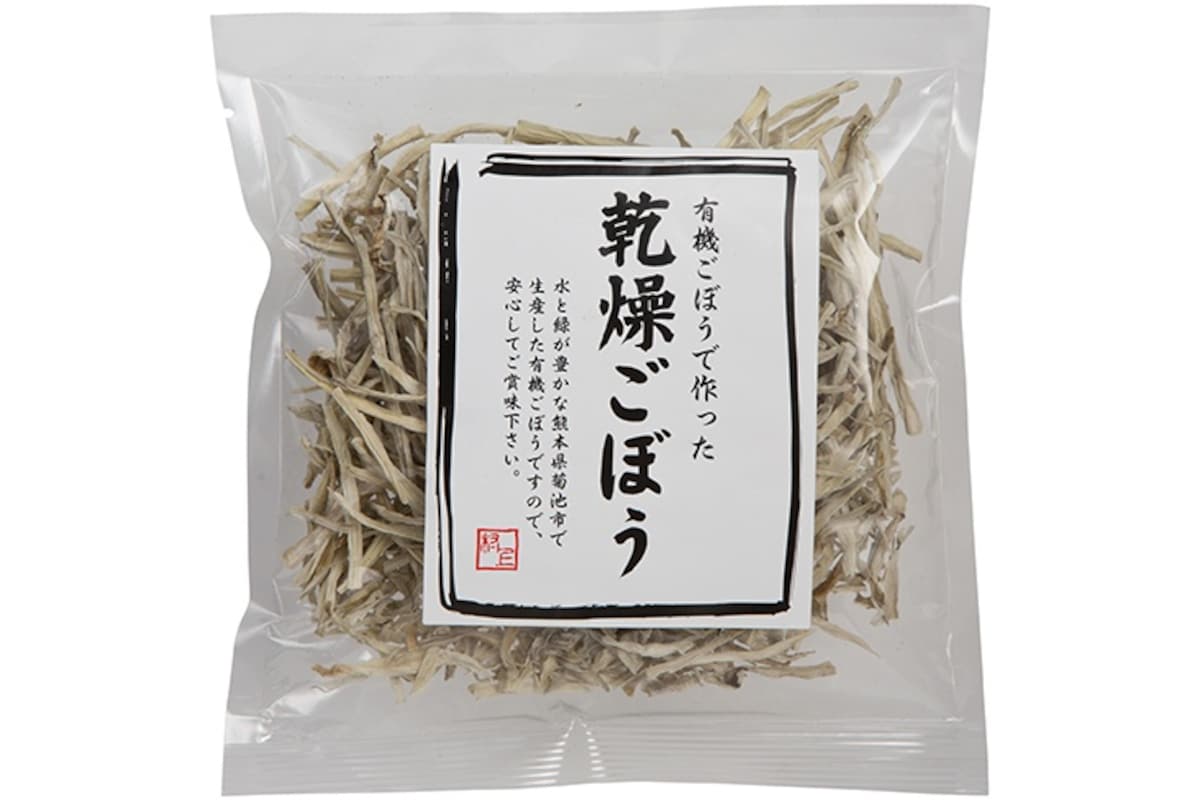
https://thewonder500.com/product/murakami-katsuyoshi-san-no-yuki-jas-kanso-gobou-jas-organic-dried-burdock/?lang=en
The city of Kikuchi in Kumamoto Prefecture spreads out at the foothills of Mount Aso, one of the world’s foremost calderas. Kikuchi Ravine, selected as one of Japan’s 100 exquisite water sources, has a variety of favorable conditions for raising delicious crops, such as its pure water with a high mineral content, and volcanic soil. In particular, its rice has ranked as Special A for seven years in a row according to the Rice Taste Ranking.
Greater burdock is a subsidiary crop raised in the rice paddies, and a famous piece of produce made possible by the bounteous conditions of the area. Murakami Katsuyoshi San no Yuki JAS Kanso Gobou (JAS organic dried burdock) is grown in rice paddies with absolutely no pesticides or chemical fertilizers, making its cultivation completely organic. Compared with ordinary burdock raised on dry land, it is whitish in color, with softer fibers due to the high moisture content of the soil. This is fragrant, sweet, and completely safe produce.
2. Sliced Dried Shiitake Mushrooms (Hokkaido)
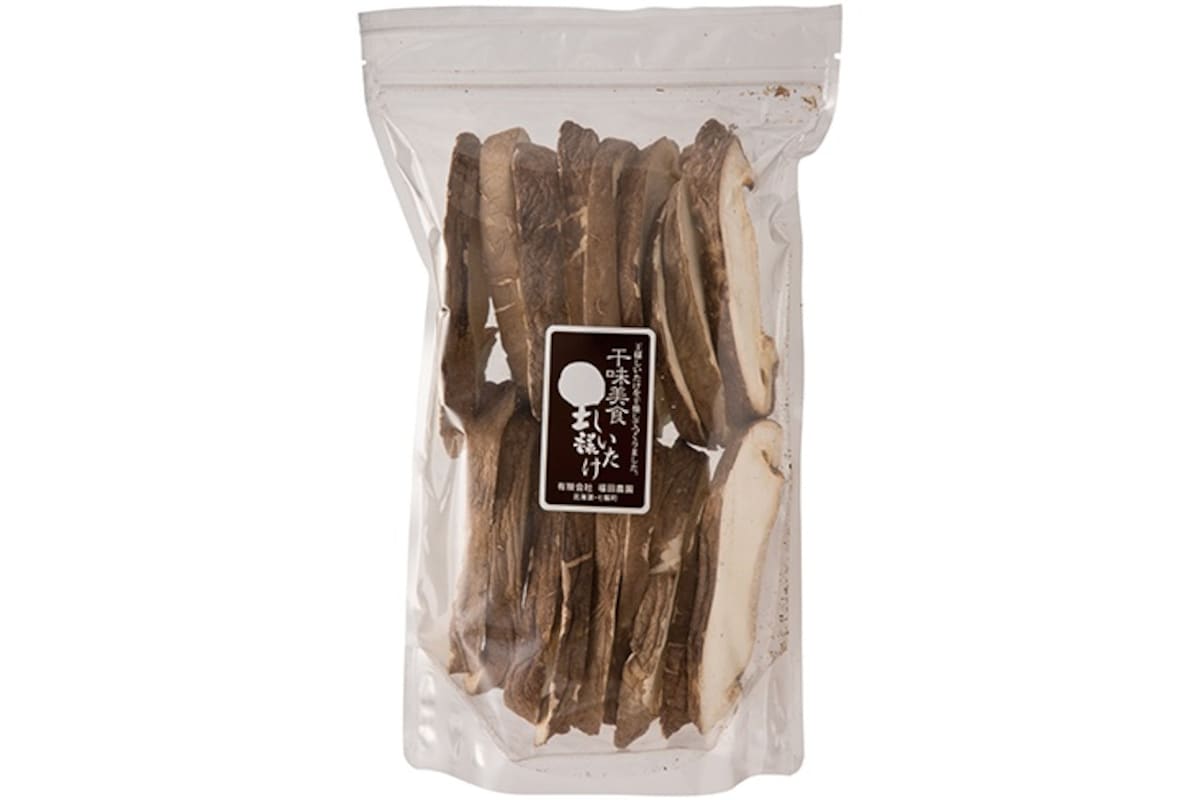
https://thewonder500.com/product/hoshino-osama-shiitake-slice-sliced-dried-shiitake-mushrooms/?lang=en
Hoshino Osama Shiitake is a dried and sliced, large, fleshy shiitake mushroom produced in the cold climate of Hokkaido. This “king” of shiitake lives up to its name—it loses none of its size or plumpness even after drying, and is highly aromatic with a rich flavor. The bitterness, off-flavor, and astringent characteristic of shiitake is suppressed, and even sweetness is detectable. As a dried food, it is also convenient for taking overseas.
The creators put great effort into getting this non-standard giant shiitake rated. It is a flavorful and filling world-class food item. While porcini and other types of mushrooms are already popular overseas, this shiitake mushroom is sure to be appreciated both in Japan and overseas.
1. Daitokuji Fermented Soy Beans (Kyoto)
What makes this natto so special? Unlike most fermented soy beans, Daitokuji Natto does not produce sticky strings when stirred. The origin of this product can be traced back to the 15th century, when Ikkyu Sojun, one of Japan’s most famous Zen Buddhist monks, introduced to the leading Japanese Zen Buddhist temple of Daitokuji the ancient method for manufacturing fermented soy beans originally imported from China in the 10th to 11th century.
Since then, the manufacturer has engaged in meticulous research and development to improve its product in a manner that matches better with the Japanese palate against the backdrop of the changing times. Daitokuji Natto’s characteristic flavor is close to that of miso paste and is distinguished by a strong salty taste. Eating Daitokuji Natto is said to have a positive effect on stomach indisposition and bring a sense of relief and lightness. As a natural preserved food, this product does not spoil even at room temperature, so it can easily be carried around. Daitokuji Natto is also a convenient salt supplement during physical activity.


